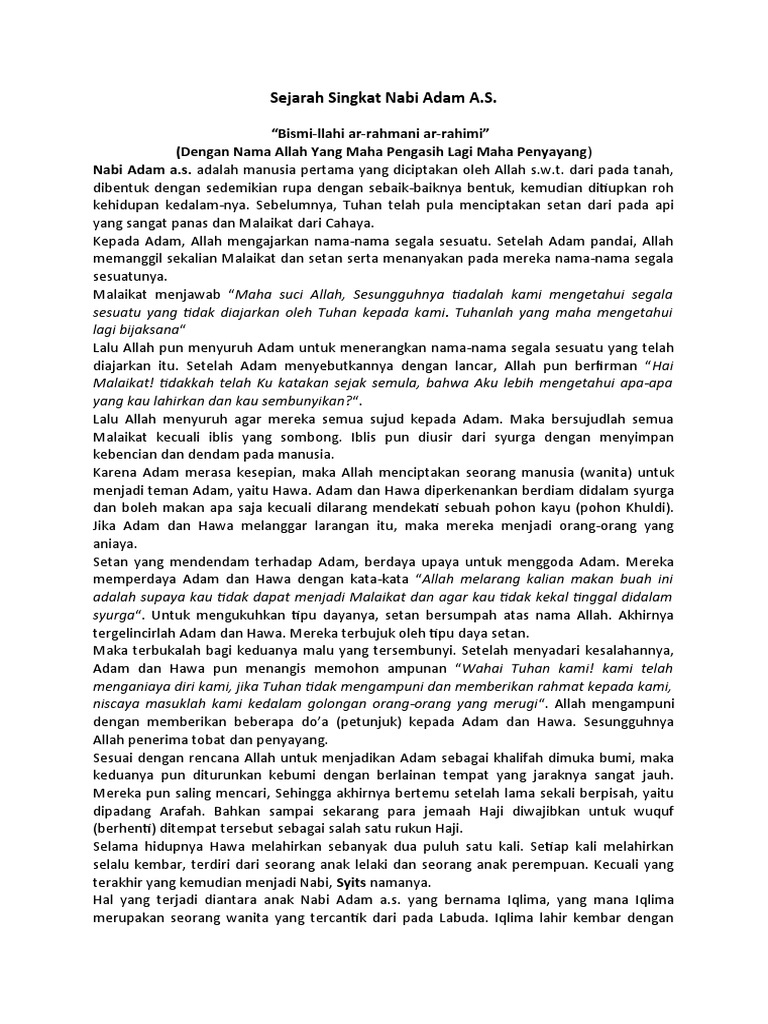The teachings of the Bahá’í Faith encompass diverse elements that resonate deeply with individuals seeking spiritual fulfillment and understanding. Among these teachings lies a profound narrative concerning Adam and the Age of Prophecy, a timeline that spans millennia and encapsulates the essence of divine revelation. This exploration provides insight not only into the story of the first prophet but also into the broader implications that his life and mission embody within the framework of Bahá’í belief.
Adam is universally acknowledged as the progenitor of humankind and serves as a pivotal figure not only in Abrahamic religions but also in the collective consciousness of many cultures. In Bahá’í theology, Adam is upheld as a symbol representing the onset of prophetic evolution. His existence signals a new chapter in humanity’s spiritual journey, invoking curiosity about the interplay between divine guidance and human agency. This relationship is a recurrent theme within the Bahá’í teachings.
The timeline of prophetic revelations illuminates a progression of spiritual enlightenment that spans across epochs. Each prophet, including Adam, is viewed as a successor in a long lineage, each endowed with a specific message tailored to the needs of their contemporaneous society. This lineage exemplifies the principle of progressive revelation, a core tenet of Bahá’í belief that suggests each prophet contributes uniquely to humanity’s understanding of the divine.
A noteworthy consideration is the historical context surrounding Adam’s narrative. In many traditions, he is depicted as the first human to receive guidance from God. The Bahá’í interpretation acknowledges that Adam, while primarily recognized as the first man, is also celebrated as an archetypal figure embodying the various attributes that define prophetic leadership. This characterization fosters a deeper appreciation for the struggles and triumphs of humanity as it grapples with its spiritual aspirations.
Central to the Bahá’í Faith is the understanding that prophecy is not an isolated phenomenon; rather, it reflects a dynamic interplay of divine influence and human development. It is within this interplay that followers of Bahá’u’lláh find resonance. The teachings position Adam not merely as an isolated figure but rather as a harbinger of myriad prophetic themes that manifest throughout history, thereby establishing a foundational framework for understanding the divine purpose within humanity.
As the narrative unfolds, we encounter various other prophetic figures, each of whom fulfills a distinct role in guiding humanity toward spiritual maturity. From Noah to Abraham, Moses, Jesus, Muhammad, and ultimately Bahá’u’lláh, the timeline delineates a sequence where each prophet builds upon the legacies of their predecessors. Intriguingly, the portrayal of Adam invites contemplation on the interconnectedness of these figures within the overarching narrative of human progress.
Within the Bahá’í context, there exists a recognition of the continuing relevance of the teachings associated with Adam. The exploration of his character serves as a lens through which contemporary adherents can derive lessons applicable to modern challenges. The qualities of humility, obedience, and recognition of one’s inherent limitations are potent reminders of the spiritual prerequisites for achieving harmony in an increasingly fragmented world. In continuing this line of thought, one observes that Adam’s legacy extends beyond individual virtues; it encapsulates the very essence of solidarity found in diverse communities united by a common faith.
In focusing on the Age of Prophecy, it is essential to address the characteristic themes that emerge throughout this historical continuum. One such theme is the concept of unity, which is emphasized repeatedly in Bahá’í scripture. Adam’s story, like those of subsequent prophets, advocates for a collective journey towards enlightened understanding. The alarming fractures that have emerged in society prompt a vivid reminder that divisiveness obscures the spiritual truths that lie at the heart of prophetic teachings.
Furthermore, the narratives surrounding these figures often illuminate the perennial struggles faced by prophets: rejection, misunderstanding, and perseverance. This commonality underscores a critical observation within Bahá’í thought: the path of a prophet is frequently laden with trials, yet it persists as a testament to their unwavering commitment to humanity. These challenges resonate profoundly with followers, reminding them that the pursuit of truth is not merely a historical inquiry but a living experience fraught with complexity.
The Bahá’í perspective also urges an examination of the temporal relevance of these teachings. In an era marked by rapid technical advancement and evolving moral paradigms, the wisdom derived from the teachings of figures such as Adam provides profound insights. The challenge is to distill ancient wisdom into principles that can be harnessed to navigate present-day dilemmas, thereby validating the timeless nature of these teachings.
In conclusion, the exploration of Adam and the Age of Prophecy within the Bahá’í Faith reveals a rich tapestry of spiritual thought that transcends mere historical recounting. It presents a compelling narrative that fosters introspection, unity, and a renewed commitment to the principles of justice and compassion. The story of Adam, as interpreted through the lens of Bahá’í teachings, serves as a beacon of hope, illuminating the path toward individual and collective transformation. Engaging with this narrative inspires a continuous quest for deeper understanding while fostering a stronger, more cohesive community of believers dedicated to the ideals of love, peace, and unity in diversity.
